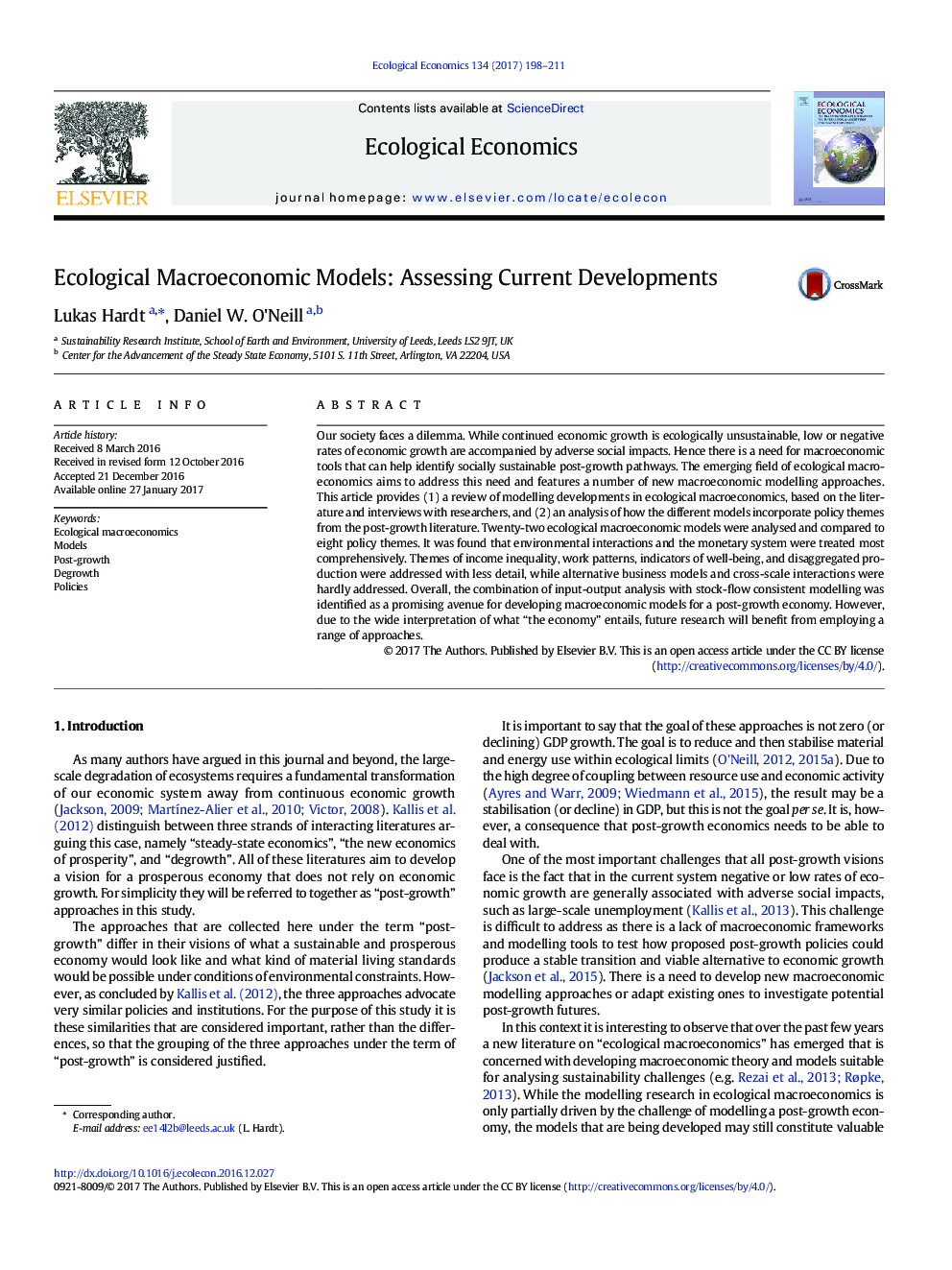| کد مقاله | کد نشریه | سال انتشار | مقاله انگلیسی | نسخه تمام متن |
|---|---|---|---|---|
| 5048692 | 1476345 | 2017 | 14 صفحه PDF | دانلود رایگان |
- 22 ecological macroeconomic models were analysed based on literature and interviews.
- The capacity of these models to test 8 post-growth policies themes was evaluated.
- Environment and monetary system are represented in more depth than other themes.
- Alternative business models and cross-scale interactions are barely addressed.
- Combining input-output analysis and stock-flow consistency is a promising approach.
Our society faces a dilemma. While continued economic growth is ecologically unsustainable, low or negative rates of economic growth are accompanied by adverse social impacts. Hence there is a need for macroeconomic tools that can help identify socially sustainable post-growth pathways. The emerging field of ecological macroeconomics aims to address this need and features a number of new macroeconomic modelling approaches. This article provides (1) a review of modelling developments in ecological macroeconomics, based on the literature and interviews with researchers, and (2) an analysis of how the different models incorporate policy themes from the post-growth literature. Twenty-two ecological macroeconomic models were analysed and compared to eight policy themes. It was found that environmental interactions and the monetary system were treated most comprehensively. Themes of income inequality, work patterns, indicators of well-being, and disaggregated production were addressed with less detail, while alternative business models and cross-scale interactions were hardly addressed. Overall, the combination of input-output analysis with stock-flow consistent modelling was identified as a promising avenue for developing macroeconomic models for a post-growth economy. However, due to the wide interpretation of what “the economy” entails, future research will benefit from employing a range of approaches.
Graphical Abstract133
Journal: Ecological Economics - Volume 134, April 2017, Pages 198-211
